Post by anansi on Apr 6, 2010 4:50:10 GMT -5
An edited version of A thread From
www.egyptsearch.com/forums/ultimatebb.cgi?ubb=get_topic;f=15;t=001850;p=1#000000
For full version including feed back..
make your own feed back here if you please.
Khart Haddast or Carthage was said to be founded at about 814 B.C by Phoenician colonizers..under a legendary Queen Dido. but what do we know of both civilizations in terms of culture and ethnic origins. were the people biologicially Africans...Eur-Asians..A combination of the two?..and was that reflected in the culture as well?...the simplistic question of simply were they black or white will not do..first a look at the founding fathers of the Carthaginians..the Phoenicians who were they really?
From the very begining as any good Sunday school student knows..the Canaanites the original name of the people was the son of Ham brother of Misriem brother of Kush. Making Canaan the only one of Ham's sons to fall out-side Africa...But wait!! Altakruri will sure to protest giving up any inch of that strip of land on geological grounds for sure on cultural grounds maybe. Lets see what some random cut and paste said on the matter..shall we??
Canaan (Phoenician: , Kana'n, Hebrew: כנען kna-an, Arabic: كنعان Kanaʿān) is an ancient term for a region encompassing modern-day Israel and Lebanon, the Palestinian Territories, plus adjoining coastal lands and parts of Jordan, Syria and northeastern Egypt. In the Hebrew Bible, the "Land of Canaan" extends from Lebanon southward across Gaza to the "Brook of Egypt" and eastward to the Jordan River Valley, thus including modern Israel and the Palestinian Territories. In far ancient times, the southern area included various ethnic groups. The Amarna Letters found in Ancient Egypt mention Canaan (Akkadian: Kinaḫḫu) in connection with Gaza and other cities along the Phoenician coast and into Upper Galilee. Many earlier Egyptian sources also make mention of numerous military campaigns conducted in Ka-na-na, just inside Asia.
Various Canaanite sites have been excavated by archaeologists. Canaanites spoke Canaanite languages, closely related to other West Semitic languages. Canaanites are mentioned in the Bible, Mesopotamian and Ancient Egyptian texts. Although the residents of ancient Ugarit in modern Syria do not seem to have considered themselves Canaanite, and did not speak a Canaanite language (but one that was closely related, the Ugaritic language), archaeologists have considered the site, which was rediscovered in 1928, as quintessentially Canaanite.[1] Much of the modern knowledge about the Canaanites stems from excavation in this area. Canaanite culture apparently developed in situ from the Circum-Arabian Nomadic Pastoral Complex, which in turn developed from a fusion of Harifian hunter gatherers with Pre-Pottery Neolithic B (PPNB) farming cultures, practicing animal domestication, during the 6,200 BC climatic crisis.[2]
Wiki.
A non Bibicial View.
Archaeologists argue that the Phoenicians are simply the descendants of coastal-dwelling Canaanites, who over the centuries developed a particular seagoing culture and skills.[citation needed] Other suggestions are that Phoenician culture must have been inspired from external sources (Egypt, North Africa etc.), that the Phoenicians were sea-traders from the Land of Punt who co-opted the Canaanite population;[citation needed] or that they were connected with the Minoans,[citation needed] or the Sea Peoples or the Philistines further south;[citation needed] or even that they represent the maritime activities of the coastal Israelite tribes like Dan,[citation needed] who from the Song of Deborah in Judges, are listed as being "amongst their ships.
What they may have looked liked:
-
www.africaresource.com/.../
An example of a 19th century view is that of John Denison Baldwin who thought that the ancient Phoenicians were of Cushite or Hamite origin. Speaking of their stupendous architectural remains, he wrote:- The Cushite origin of these cities is so plain that those most influenced by the strange monomania which transforms the Phoenicians into Semites now admit that the Cushites were the civilizers of Phoenicia. “Prehistoric Nations” pg 145.
TV journalist Gerhard Herm asserts that, because the Phoenicians' legendary sailing abilities are not well attested before the invasions of the Sea Peoples around 1200 BC, that these Sea Peoples would have merged with the local population to produce the Phoenicians, whom he says gained these abilities rather suddenly at that time. There is also archaeological evidence that the Philistines, often thought of as related to the Sea Peoples, were culturally linked to Mycenaean Greeks, who were also known to be great sailors even in this period.
The question of the Phoenicians' origin persists. Archaeologists have pursued the origin of the Phoenicians for generations, basing their analyses on excavated sites, the remains of material culture, contemporary texts set into contemporary contexts, as well as linguistics. In some cases, the debate is characterized by modern cultural agendas. Ultimately, the origins of the Phoenicians are still unclear: where they came from and just when (or if) they arrived, and under what circumstances, are all still energetically disputed.


The Kemetic/ Pheonician connection..due to the Kemites lack of big trees..they imported large amounts of Labanese Pines that they also used for their ships.Infact the very name Pheonician may very well derived from the kemitic word,Fenekhu, which some egyptologist have suggested means wood-chopper.
Pheonician Identity crisis;Renan's first major discovery was a group of stone slabs inscribed with Egyptian hieroglyphs.next he found a large bas-relief potraying what happend to be the Egyptian goddess Hathor,her head adorned with the cows horn sun disk,excatly as she appeeared on Egyptian reliefs. Later excavators at Byblos turned up more in the same vain-Egyptian-style obelisks,a multitude of vessels bearing the insignia of the Egyptian Pharaohs,A magnificent temple of Hathor dating from the 3rd millennium B.C. Indeed everywhere archeologist turned in Phoenicia, they seemed to stumble across the spector of Egypt:
We should not be so surprised to find Babylos so Egyptianized .The city had spent much of it's early history under Egypt's Imperial thumb. At least as early as the 12th dyn.according to Egyptologist David O Conner,Babylos "functioned to some degree as a vassel state of Egypt. It remained so for the next 1000yrs.
The above taken from Black Spark White Fire.
So there you have it the Pheonicians even if they did not originally came from further south which they might have been received such massive influence from Kemet that at one point their culture became almost indistinguishible from that of Kemet.So at the very least we can say the Pheonicians where part African in culture..even before they made the trip to become Carthaginians...and just by casual eyeballing some look very much like their neighbours to the south.

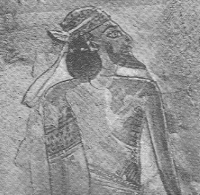
However some also look like this.> - just keeping it real - So some folks looks like what some West-Asians usually look like...and some looked and dressed like Africans. Not to mention the remains found at Lakish:The excavacation uncovered a mass of human bones,which was estamated to from the remains of fifteen hundred individuals..remains of 695 skulls were brought to London by the British expidition...curiously,the crania indicate a close resemblance to the population of Egypt at this time...the relationships found suggest that the population of the town in 700 B.C was entirely of Egyptian origin..they show further,that the population of lakish was probably derived from upper Egypt.
James e Brunson:
Now that we can safely say that Pheonicia was atleast partly African and partly West Asian in culture,and biologically..lets follow their move to North West Africa and beyond.
Khart Haddast or Carthage was said to be founded at about 814 B.C by Phoenician colonizers..under a legendary Queen Dido who found other people on spot on arrival.
Dido and the founding of Carthage:
Very early in ancient history, Phoenician sailors had visited the far corners of the Mediterranean sea and established commercial relations with the local people. Sidonian Phoenicians had established trading posts in the 16th century B.C. at Utica which is relatively close to where Carthage was later to be established. Their main objective was commercial to compete with their Tyrinian Phoenician brothers who had a colony at Utica. Archaeological evidence of the early settlements have been found. The position of Utica towards Carthage was precisely that of Sidon towards Tyre. It was the more ancient city of the two, and it preserved a certain kind of position without actual power. Carthage and Utica competed, like Tyre and Sidon and they were at one time always spoken of together.
Elissar and her Tyrinian entourage, including her priests and temple maidens of Ashtarte, crossed the length of the Mediterranean in several ships and settled the shores of what's today modern Tunisia. Her expedition came and negotiated with the local inhabitants on purchasing a piece of land. Sailing into the Gulf of Tunis she spied a headland that would be the perfect spot for a city and chose the very site called Cambe or Caccabe which was an ancient Sidonian Phoenician trading post. However, some records indicate that the goddess Tanit (Juno in Latin) indicated the spot were to found the city. The natives there weren't too happy about the newcomers, but Elissar was able to make a deal with their king Japon: she promised him a fair amount of money and rent for many years for as much land as she could mark out with a bull's skin.
The king thought he was getting the better end of the deal, but he soon noticed that the woman he was dealing with was smarter than he had expected. This purchase contained some intrigue while the size of the land was thought not to exceed a "Bull's Hide," it actually was a lot larger then ever thought. The trick she and her expedition employed was that they cutup a bull's hide into very thin which they sewed together into one long string. Then they took the seashore as one edge for the piece of land and laid the skin into a half-circle. Consequently, Elissar and her company got a much bigger piece of land than the king had thought possible. The Carthaginians continued to pay rent for the land until the 6th century BC. That hilltop today is called the "Byrsa." Byrsa means "ox hide." However, there is some confusion over the word; some believe that it refers to the Phoenician word borsa which means citadel or fortress.
phoenicia.org/elissardidobio.html
So has one can see there was no plundering or forcing of the natives off their lands..but what of the natvies themselves?...well they are non other than the so-called Berbers an African people carrying East African male dna and significant Eurisian mtdna..maybe the experts on this board can explain it better than I. so quite possibily they looked like both AlT's creamy colored libyans and the much darker types such as the Taurages and others..so in that sense they would look very similar to the incomming Pheonicians and coin and sculpture beres this out. As to when these Africans pick-up EurAsian mtdna is still being debated.
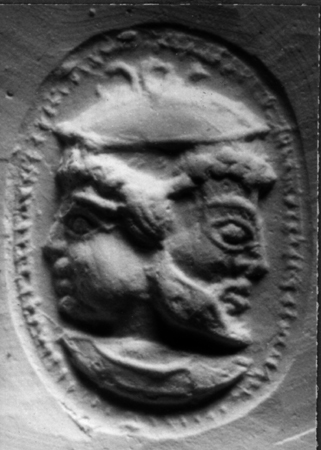
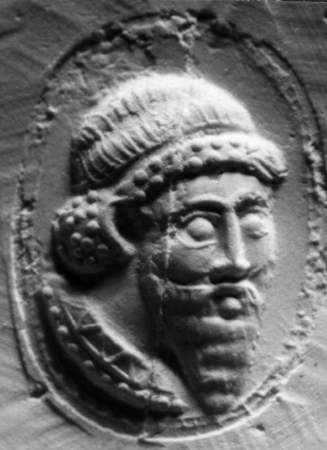



How they looked From the earliest times
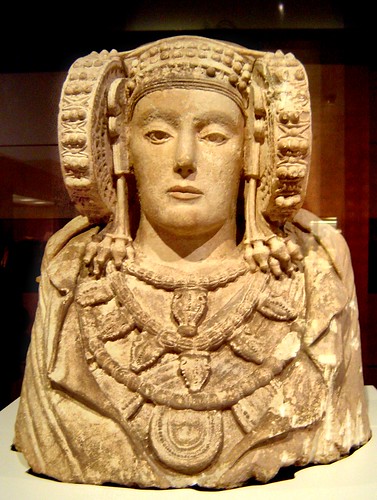
This type was also present..from Spain.

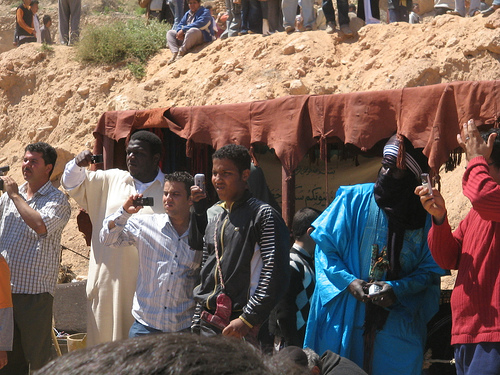
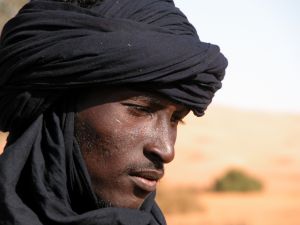

How far south did Carthaginian trade and culture spread. From one of Diop's book he put forth the possibility that atleast one of the ethnic groups
is connected to the Carthiginains..according to Civilization or Barbarism...Finally let us interpret a Senegalese oral tradition to which no attention has been said, and which,in our opinion ,would militate for a Carthaginian presence in antiquity on the Senegalese shores:This would be a strong comfirmation of Hanno's expidition.
It is said that Barka was Ndiadjan Ndiaye's brother and his mother, Farimata Sall,Lam Toro's daughter, was of the peul race of the Belianke.It is from his name, Barka, that came the word "Barka",or "Barak," designating the king of Walo, a region of the Senegal river's estuary,which the Carthigianians sailed(according to the very controversial interpretation of some Roman historical documents)to Bambuk,near Kaarta.There is in this story a constellation of Carthaginian names that may not be of chance; but only well conducted excavations all along the Senegalese river up to Kaarta country could one day confirm this hypothesis, with the discovery of charactically Punic objects.
In fact,Barka is not of Arabic origin; it is Carthiginian and it designates the royalty there where the Carthaginians landed,if they ever came to Senegal.Belianki is a compound term which, in Peul or even the Soninke languages, brakes down as follows: Bel+Nke=the men of Bel or Bal(Punic God).And we know that Bal is still today a proper name of the Tukulors, the ethnic group that lives in the river region above.
Kaarta is pratically the exact term the Romans called Carthago, or Carthage.
according the controversial text Hanno's long and complacted journey,the Carthiginians supposedly left a colony(sixty persons or thirty couples)on cern Island,which is a strip of land near the Senegal River's estuary.The term Belianke,formed in the same manner as Soninke,Malinke,Foutanke,etc;nesseraily precedes Islam and goes back to the sixth century B.C during the time when the cult of Baal was still in place.
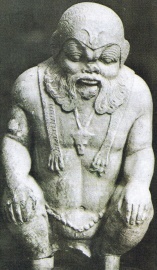
our old friend Bes in Punic Ibiza Spain
Thunder and sex: Min,Pan and BwAZA:
With the possible exception of the Yazidis and the Alawi, in Iraq and Syria,the non-christian or non muslims among the Gurage of South-Central Ethiopia are today the only Semetic speaking "pagans". Among them,Bwaza or Bazo is still worshipped for his arbitary violence and sexual appetite. as a Gurage hymn puts it:
Oh Bwaza,is there a place you do not descend to,
a Keyae(house-hold) you do not visit,where you do not slay father and son Where you do not elope with the mother and daughter?.
Intrestingly,these two apperently contridictory aspects seem to be reflected ethymologicallyin the name Bwaza itself. this comes from a Semetic or Afroasiatic biconsonantal root BZ with many different forms,which the lexicographer David Cohen groups into semantic clusters,split, divide,distribute and inflate,inseminate and abound. In the book of Ruth Boaz was the name of Naomi's kinsman whose association with fertility is shown by his consumation of his marrage to Ruth,on a threshing floor at harvest time in Bethlehem,'House of Bread'. The thundering aspect of Bw.aza is paralleled in the Biblical use of the name Bo.az as the name of one of the pair of pillars placed infront of the temple of Yahweh. Bo.az was presumably also the name of the similar pillars known to have been placed before other Canaanite temples. The pratice of placing free standing pillars in front of temples has a counterpart in the cult of Bw.aza among the Guarage. The priest of Bw.aza called maga- a name that is intrestingly and inexplicably close to the Irainian Magi-distribute for profit small strips of wood,sana,from trees struck by lightning. These are placed onthe ground close to the entrance of a compound or outside a hutan as the anthropologist William Shack puts it,Whereever sana is displayed,it symbolizes that the land and property is blessed and others respect it for fear of Bw.za reprisals.This type of spiritual lightining conductor infront of houses would seem to be a Gurage parallel on a domestic scale to the Bo.az placed in front of temples.The need for protection from this fierce but creative divinity in West Semitic religion can be seen in the Ugaratic hymns and epics of Ba'al,who punishes without mercy while fertiliziting the land and,like a storm tears out and brandishes trees.
Taken from Black Athena.
There you have it the earliest connection between the Lavant the Nile Valley and beyond. These people were carrying an African culture from their very formation...what we think of as West Asian..sometimes were actually African that took on new characteristics.
www.egyptsearch.com/forums/ultimatebb.cgi?ubb=get_topic;f=15;t=001850;p=1#000000
For full version including feed back..
make your own feed back here if you please.
Khart Haddast or Carthage was said to be founded at about 814 B.C by Phoenician colonizers..under a legendary Queen Dido. but what do we know of both civilizations in terms of culture and ethnic origins. were the people biologicially Africans...Eur-Asians..A combination of the two?..and was that reflected in the culture as well?...the simplistic question of simply were they black or white will not do..first a look at the founding fathers of the Carthaginians..the Phoenicians who were they really?
From the very begining as any good Sunday school student knows..the Canaanites the original name of the people was the son of Ham brother of Misriem brother of Kush. Making Canaan the only one of Ham's sons to fall out-side Africa...But wait!! Altakruri will sure to protest giving up any inch of that strip of land on geological grounds for sure on cultural grounds maybe. Lets see what some random cut and paste said on the matter..shall we??
Canaan (Phoenician: , Kana'n, Hebrew: כנען kna-an, Arabic: كنعان Kanaʿān) is an ancient term for a region encompassing modern-day Israel and Lebanon, the Palestinian Territories, plus adjoining coastal lands and parts of Jordan, Syria and northeastern Egypt. In the Hebrew Bible, the "Land of Canaan" extends from Lebanon southward across Gaza to the "Brook of Egypt" and eastward to the Jordan River Valley, thus including modern Israel and the Palestinian Territories. In far ancient times, the southern area included various ethnic groups. The Amarna Letters found in Ancient Egypt mention Canaan (Akkadian: Kinaḫḫu) in connection with Gaza and other cities along the Phoenician coast and into Upper Galilee. Many earlier Egyptian sources also make mention of numerous military campaigns conducted in Ka-na-na, just inside Asia.
Various Canaanite sites have been excavated by archaeologists. Canaanites spoke Canaanite languages, closely related to other West Semitic languages. Canaanites are mentioned in the Bible, Mesopotamian and Ancient Egyptian texts. Although the residents of ancient Ugarit in modern Syria do not seem to have considered themselves Canaanite, and did not speak a Canaanite language (but one that was closely related, the Ugaritic language), archaeologists have considered the site, which was rediscovered in 1928, as quintessentially Canaanite.[1] Much of the modern knowledge about the Canaanites stems from excavation in this area. Canaanite culture apparently developed in situ from the Circum-Arabian Nomadic Pastoral Complex, which in turn developed from a fusion of Harifian hunter gatherers with Pre-Pottery Neolithic B (PPNB) farming cultures, practicing animal domestication, during the 6,200 BC climatic crisis.[2]
Wiki.
A non Bibicial View.
Archaeologists argue that the Phoenicians are simply the descendants of coastal-dwelling Canaanites, who over the centuries developed a particular seagoing culture and skills.[citation needed] Other suggestions are that Phoenician culture must have been inspired from external sources (Egypt, North Africa etc.), that the Phoenicians were sea-traders from the Land of Punt who co-opted the Canaanite population;[citation needed] or that they were connected with the Minoans,[citation needed] or the Sea Peoples or the Philistines further south;[citation needed] or even that they represent the maritime activities of the coastal Israelite tribes like Dan,[citation needed] who from the Song of Deborah in Judges, are listed as being "amongst their ships.
What they may have looked liked:
-
www.africaresource.com/.../
An example of a 19th century view is that of John Denison Baldwin who thought that the ancient Phoenicians were of Cushite or Hamite origin. Speaking of their stupendous architectural remains, he wrote:- The Cushite origin of these cities is so plain that those most influenced by the strange monomania which transforms the Phoenicians into Semites now admit that the Cushites were the civilizers of Phoenicia. “Prehistoric Nations” pg 145.
TV journalist Gerhard Herm asserts that, because the Phoenicians' legendary sailing abilities are not well attested before the invasions of the Sea Peoples around 1200 BC, that these Sea Peoples would have merged with the local population to produce the Phoenicians, whom he says gained these abilities rather suddenly at that time. There is also archaeological evidence that the Philistines, often thought of as related to the Sea Peoples, were culturally linked to Mycenaean Greeks, who were also known to be great sailors even in this period.
The question of the Phoenicians' origin persists. Archaeologists have pursued the origin of the Phoenicians for generations, basing their analyses on excavated sites, the remains of material culture, contemporary texts set into contemporary contexts, as well as linguistics. In some cases, the debate is characterized by modern cultural agendas. Ultimately, the origins of the Phoenicians are still unclear: where they came from and just when (or if) they arrived, and under what circumstances, are all still energetically disputed.


The Kemetic/ Pheonician connection..due to the Kemites lack of big trees..they imported large amounts of Labanese Pines that they also used for their ships.Infact the very name Pheonician may very well derived from the kemitic word,Fenekhu, which some egyptologist have suggested means wood-chopper.
Pheonician Identity crisis;Renan's first major discovery was a group of stone slabs inscribed with Egyptian hieroglyphs.next he found a large bas-relief potraying what happend to be the Egyptian goddess Hathor,her head adorned with the cows horn sun disk,excatly as she appeeared on Egyptian reliefs. Later excavators at Byblos turned up more in the same vain-Egyptian-style obelisks,a multitude of vessels bearing the insignia of the Egyptian Pharaohs,A magnificent temple of Hathor dating from the 3rd millennium B.C. Indeed everywhere archeologist turned in Phoenicia, they seemed to stumble across the spector of Egypt:
We should not be so surprised to find Babylos so Egyptianized .The city had spent much of it's early history under Egypt's Imperial thumb. At least as early as the 12th dyn.according to Egyptologist David O Conner,Babylos "functioned to some degree as a vassel state of Egypt. It remained so for the next 1000yrs.
The above taken from Black Spark White Fire.
So there you have it the Pheonicians even if they did not originally came from further south which they might have been received such massive influence from Kemet that at one point their culture became almost indistinguishible from that of Kemet.So at the very least we can say the Pheonicians where part African in culture..even before they made the trip to become Carthaginians...and just by casual eyeballing some look very much like their neighbours to the south.


However some also look like this.> - just keeping it real - So some folks looks like what some West-Asians usually look like...and some looked and dressed like Africans. Not to mention the remains found at Lakish:The excavacation uncovered a mass of human bones,which was estamated to from the remains of fifteen hundred individuals..remains of 695 skulls were brought to London by the British expidition...curiously,the crania indicate a close resemblance to the population of Egypt at this time...the relationships found suggest that the population of the town in 700 B.C was entirely of Egyptian origin..they show further,that the population of lakish was probably derived from upper Egypt.
James e Brunson:
Now that we can safely say that Pheonicia was atleast partly African and partly West Asian in culture,and biologically..lets follow their move to North West Africa and beyond.
Khart Haddast or Carthage was said to be founded at about 814 B.C by Phoenician colonizers..under a legendary Queen Dido who found other people on spot on arrival.
Dido and the founding of Carthage:
Very early in ancient history, Phoenician sailors had visited the far corners of the Mediterranean sea and established commercial relations with the local people. Sidonian Phoenicians had established trading posts in the 16th century B.C. at Utica which is relatively close to where Carthage was later to be established. Their main objective was commercial to compete with their Tyrinian Phoenician brothers who had a colony at Utica. Archaeological evidence of the early settlements have been found. The position of Utica towards Carthage was precisely that of Sidon towards Tyre. It was the more ancient city of the two, and it preserved a certain kind of position without actual power. Carthage and Utica competed, like Tyre and Sidon and they were at one time always spoken of together.
Elissar and her Tyrinian entourage, including her priests and temple maidens of Ashtarte, crossed the length of the Mediterranean in several ships and settled the shores of what's today modern Tunisia. Her expedition came and negotiated with the local inhabitants on purchasing a piece of land. Sailing into the Gulf of Tunis she spied a headland that would be the perfect spot for a city and chose the very site called Cambe or Caccabe which was an ancient Sidonian Phoenician trading post. However, some records indicate that the goddess Tanit (Juno in Latin) indicated the spot were to found the city. The natives there weren't too happy about the newcomers, but Elissar was able to make a deal with their king Japon: she promised him a fair amount of money and rent for many years for as much land as she could mark out with a bull's skin.
The king thought he was getting the better end of the deal, but he soon noticed that the woman he was dealing with was smarter than he had expected. This purchase contained some intrigue while the size of the land was thought not to exceed a "Bull's Hide," it actually was a lot larger then ever thought. The trick she and her expedition employed was that they cutup a bull's hide into very thin which they sewed together into one long string. Then they took the seashore as one edge for the piece of land and laid the skin into a half-circle. Consequently, Elissar and her company got a much bigger piece of land than the king had thought possible. The Carthaginians continued to pay rent for the land until the 6th century BC. That hilltop today is called the "Byrsa." Byrsa means "ox hide." However, there is some confusion over the word; some believe that it refers to the Phoenician word borsa which means citadel or fortress.
phoenicia.org/elissardidobio.html
So has one can see there was no plundering or forcing of the natives off their lands..but what of the natvies themselves?...well they are non other than the so-called Berbers an African people carrying East African male dna and significant Eurisian mtdna..maybe the experts on this board can explain it better than I. so quite possibily they looked like both AlT's creamy colored libyans and the much darker types such as the Taurages and others..so in that sense they would look very similar to the incomming Pheonicians and coin and sculpture beres this out. As to when these Africans pick-up EurAsian mtdna is still being debated.





How they looked From the earliest times

This type was also present..from Spain.



How far south did Carthaginian trade and culture spread. From one of Diop's book he put forth the possibility that atleast one of the ethnic groups
is connected to the Carthiginains..according to Civilization or Barbarism...Finally let us interpret a Senegalese oral tradition to which no attention has been said, and which,in our opinion ,would militate for a Carthaginian presence in antiquity on the Senegalese shores:This would be a strong comfirmation of Hanno's expidition.
It is said that Barka was Ndiadjan Ndiaye's brother and his mother, Farimata Sall,Lam Toro's daughter, was of the peul race of the Belianke.It is from his name, Barka, that came the word "Barka",or "Barak," designating the king of Walo, a region of the Senegal river's estuary,which the Carthigianians sailed(according to the very controversial interpretation of some Roman historical documents)to Bambuk,near Kaarta.There is in this story a constellation of Carthaginian names that may not be of chance; but only well conducted excavations all along the Senegalese river up to Kaarta country could one day confirm this hypothesis, with the discovery of charactically Punic objects.
In fact,Barka is not of Arabic origin; it is Carthiginian and it designates the royalty there where the Carthaginians landed,if they ever came to Senegal.Belianki is a compound term which, in Peul or even the Soninke languages, brakes down as follows: Bel+Nke=the men of Bel or Bal(Punic God).And we know that Bal is still today a proper name of the Tukulors, the ethnic group that lives in the river region above.
Kaarta is pratically the exact term the Romans called Carthago, or Carthage.
according the controversial text Hanno's long and complacted journey,the Carthiginians supposedly left a colony(sixty persons or thirty couples)on cern Island,which is a strip of land near the Senegal River's estuary.The term Belianke,formed in the same manner as Soninke,Malinke,Foutanke,etc;nesseraily precedes Islam and goes back to the sixth century B.C during the time when the cult of Baal was still in place.

our old friend Bes in Punic Ibiza Spain
Thunder and sex: Min,Pan and BwAZA:
With the possible exception of the Yazidis and the Alawi, in Iraq and Syria,the non-christian or non muslims among the Gurage of South-Central Ethiopia are today the only Semetic speaking "pagans". Among them,Bwaza or Bazo is still worshipped for his arbitary violence and sexual appetite. as a Gurage hymn puts it:
Oh Bwaza,is there a place you do not descend to,
a Keyae(house-hold) you do not visit,where you do not slay father and son Where you do not elope with the mother and daughter?.
Intrestingly,these two apperently contridictory aspects seem to be reflected ethymologicallyin the name Bwaza itself. this comes from a Semetic or Afroasiatic biconsonantal root BZ with many different forms,which the lexicographer David Cohen groups into semantic clusters,split, divide,distribute and inflate,inseminate and abound. In the book of Ruth Boaz was the name of Naomi's kinsman whose association with fertility is shown by his consumation of his marrage to Ruth,on a threshing floor at harvest time in Bethlehem,'House of Bread'. The thundering aspect of Bw.aza is paralleled in the Biblical use of the name Bo.az as the name of one of the pair of pillars placed infront of the temple of Yahweh. Bo.az was presumably also the name of the similar pillars known to have been placed before other Canaanite temples. The pratice of placing free standing pillars in front of temples has a counterpart in the cult of Bw.aza among the Guarage. The priest of Bw.aza called maga- a name that is intrestingly and inexplicably close to the Irainian Magi-distribute for profit small strips of wood,sana,from trees struck by lightning. These are placed onthe ground close to the entrance of a compound or outside a hutan as the anthropologist William Shack puts it,Whereever sana is displayed,it symbolizes that the land and property is blessed and others respect it for fear of Bw.za reprisals.This type of spiritual lightining conductor infront of houses would seem to be a Gurage parallel on a domestic scale to the Bo.az placed in front of temples.The need for protection from this fierce but creative divinity in West Semitic religion can be seen in the Ugaratic hymns and epics of Ba'al,who punishes without mercy while fertiliziting the land and,like a storm tears out and brandishes trees.
Taken from Black Athena.
There you have it the earliest connection between the Lavant the Nile Valley and beyond. These people were carrying an African culture from their very formation...what we think of as West Asian..sometimes were actually African that took on new characteristics.



